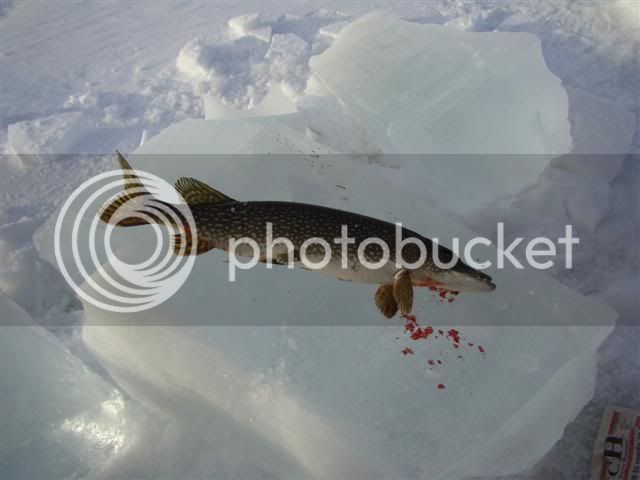Northern Winos said:
But I fear for the row of Frontenac Grapes....maybe planting a row of them wasn't such a good idea....Last year the old plant grew well but didn't produce many grapes...I planted a row of 9 small vines...they are below the snow line so will be safe....The old vine is hanging on the wires..If it doesn't produce well I might pull those youngplants before I get attached to them and plant a more hardy variety....Time will tell.
I wouldn't rush to judgement on the Frontenac yet. I still feel that the lack of grapes last year was more of a pruning and foliage management issue than the result of cold injury. Frontenac will bear full crops after -32* F winters and survive even colder weather. I bet that they will come through this cold weather relatively unscathed- although dang it's definitely cold there!
Check out the U of M site. They have updated all the info on their grapes and give more detail of a lot of varieties. Here's one page of Frontenac
http://www.grapes.umn.edu/frontenac/viticulture.html

<DIV id=containerEditableArea>
<DIV id=containerNav>
<DIV id=leftNav>
<H1 =nomargin id=whatsInside>What's Inside</H1>
<UL =bottom>
<LI>
Wine Grapes
<LI>
Licensed Nurseries
<LI>
Calendar of Events
<LI>
U of M Expertise
<LI>
Table Grapes
<LI>
Helpful Links </LI>[/list]
<UL id=home>
<LI>
Cold Hardy Grapes Home </LI>[/list]
<UL>
<LI>
Minnesota Agricultural Experiment Station
<LI>
College of Food, Agriculture and Natural Resource Sciences </LI>[/list]<!-- <h2 ="nomargin">
</H2>
<UL>
<LI>
Link to Related Site 1</LI>
[/list] -->
<DIV id=Container>
<DIV id=crumbs>
<A id=Content name=Content></A>
Home :
Wine Grapes :
Frontenac
<DIV =column0>
<DIV id=contentMain>
<H2 =home>Viticulture</H2>
Frontenac has proven to be a very disease resistant, productive, and cold hardy red wine variety. The fruit are high in acidity but have been used successfully for a variety of wine styles including dry or semi-dry table wines, ros鬠and fortified, port-style wine.
Origin. Frontenac originated from a cross between the French hybrid cultivar Landot 4511 and the University of Minnesota
Vitis riparia selection #89, found growing wild near Jordan, Minnesota. The cross was made in 1978 and the vine was selected in 1983. It was tested as MN 1047 and introduced in 1996.
Plant traits. Frontenac vines are "grower-friendly" due to their winter hardiness, disease resistance, strong vigor, desirable growth habit, and high yield potential. Frontenac has proven itself to be cold hardy enough for consistent production in central Minnesota where temperatures frequently reach minus 35oC. Outdoor and laboratory freezing tests have shown it to be more cold hardy than Marechal Foch, previously the most commonly grown grape in Minnesota. Even under conditions of high disease pressure, Frontenac has been extremely resistant to downy mildew and moderately resistant to powdery mildew and black rot. Frontenac has also been quite tolerant of the adverse effects of phenoxy herbicide drift under Midwestern conditions. It is, however, very susceptible to foliar phylloxera infestation. Berry splitting and botrytis have not been observed even under wet conditions. Frontenac vines have moderately high vigor with a slightly upright growth habit with arching canes. Growers have used several training systems for Frontenac including high bilateral cordon, low cordon with vertical shoot positioning, as well as Geneva Double Curtain. Budbreak and bloom are moderately early but slightly later than Marechal Foch. Shoots typically produce 2-3 clusters and may require cluster thinning, particularly on young vines. Frontenac ripens in the midseason (average harvest date Sept. 25 in east central Minnesota), about 7 to10 days after Marechal Foch. Frontenac has produced high yields averaging 6.1 Kg/ vine (4.4 tons/acre).
Fruit traits. The clusters of Frontenac are loose and medium in size, averaging 152 g/cluster and 18 cm (7 in) in length, and conical in shape with a small shoulder. Berries are small to medium averaging 1.1 g/ berry and 12 mm (0.5 in) in diameter. Sugar levels have been high, averaging 24.8° brix but reaching levels as high as 28° brix. Acid levels have also been higher than most cultivars at 1.51%. Due these high levels of both sugar and acidity, Frontenac wines often require malolactic fermentation in order to produce a well balanced wine in northern climates. Frontenac has light red juice and, thus, is a mild 'teinturier'. When given a moderate amount of skin contact (4?6 days), 'Frontenac' wine has developed an attractive deep garnet red color. The most common aroma component identified by tasters has been cherry, with lesser amounts of berry, black currant, and plum. Occasionally, wines have developed a distinct chocolate aroma after bottle aging.
Adaptation. Frontenac has quickly become the most widely planted red wine grape in Minnesota. It is also commonly planted in other Midwestern states and has become quite popular in Quebec. It should be a useful variety in other cold climate viticulture areas (USDA plant hardiness zones 4 and 5) of the eastern US and Canada.
<DIV id=subnavigationContainer>
<DIV id=subnavigation>
<UL>
<LI>
Viticulture
<LI>
Enology
<LI>
Order Promotional Materials
<LI>
Download Pics & Text </LI>[/list]
<DIV =rowClear>
<DIV id=subnavigation>
<DIV id=otherNavigation>
Other Wine Grapes
<UL>
<LI>
Frontenac gris
<LI>
La Crescent
<LI>
Marquette </LI>[/list]
<DIV =rowClear>
<DIV =rowClear>
<DIV id=footer>
<UL =footerList>
<LI =left>©2006-2007 Regents of the University of Minnesota. All rights reserved. </LI>
<LI =rightpadding>
Privacy </LI>
<LI =rightline>
Contact U of M </LI>[/list]
<UL =footerList>
<LI =footeritalic>The University of Minnesota is an equal opportunity educator and employer. </LI>
<LI =right>Last modified on January 19, 2008 </LI>[/list]
Edited by: appleman 



















